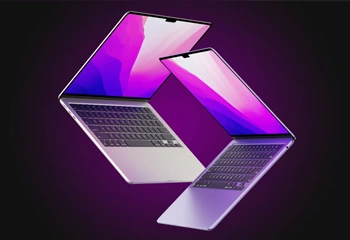Optimizing Value: Professional Insights on Laptop Buyback Programs

In today’s fast-paced technological landscape, the average lifespan of a laptop is shrinking as newer models continually offer more advanced features and capabilities. For professionals and businesses alike, this rapid innovation means frequent upgrades are often necessary to stay ahead. However, this constant cycle of upgrading can be costly and environmentally unfriendly. Enter the laptop buyback program—a savvy solution designed to optimize value, reduce e-waste, and make the upgrade process smoother. In this article, we’ll delve into the benefits, considerations, and best practices for leveraging buyback old laptop professionally.
The Benefits of Laptop Buyback Programs
1. Financial Savings
One of the most compelling reasons to participate in a laptop buyback program is the potential for financial savings. By trading in your old laptops, you can offset the cost of new equipment. This is especially beneficial for businesses that need to equip multiple employees with the latest technology. The funds recovered through the buyback program can be reinvested into other areas of the business, thereby optimizing your budget.
2. Environmental Responsibility
E-waste is a growing concern globally, with millions of tons of electronic waste generated each year. Laptop buyback programs offer an environmentally friendly way to dispose of old devices. These programs ensure that laptops are either responsibly recycled or refurbished for resale, significantly reducing the environmental impact. By participating in these programs, companies can demonstrate their commitment to sustainability, which can be a powerful component of corporate social responsibility initiatives.
3. Security
Data security is paramount for any professional or business. Reputable buyback programs often include thorough data wiping services, ensuring that all sensitive information is completely removed from the devices before they are resold or recycled. This alleviates the risk of data breaches and ensures compliance with data protection regulations.
4. Convenience
Managing old hardware can be a logistical challenge. Laptop buyback programs streamline this process, offering hassle-free pickup or drop-off options. This convenience allows businesses to focus on their core activities without worrying about the disposal or resale of outdated equipment.
Key Considerations for Optimizing Value
1. Evaluate the Condition of Your Laptop
The value of your laptop in a buyback program largely depends on its condition. Before initiating a trade-in, assess the physical and functional state of your device. Minor repairs or upgrades, such as replacing a cracked screen or adding more RAM, can sometimes significantly increase the buyback value.
2. Research Program Options
Not all buyback programs are created equal. It’s essential to research and compare different programs to find the one that offers the best value and services. Look for programs that provide transparent pricing, reliable customer service, and comprehensive data wiping guarantees.
3. Understand the Buyback Process
Familiarize yourself with the buyback process of the chosen program. This typically involves getting a quote, shipping the laptop (or scheduling a pickup), and receiving payment once the device has been assessed. Understanding this process can help you plan and manage expectations effectively.
4. Timing Matters
The value of laptops depreciates over time. To maximize your return, consider trading in your laptop sooner rather than later. Additionally, some buyback programs offer promotional periods where they provide higher trade-in values, so keep an eye out for these opportunities.
Best Practices for Businesses
1. Create a Device Lifecycle Policy
Implementing a structured device lifecycle policy can help streamline the process of upgrading and trading in laptops. This policy should define the expected lifespan of devices, the criteria for replacement, and the steps for participating in buyback programs.
2. Educate Employees
Ensure that employees are aware of the company’s policy regarding device upgrades and buybacks. Educate them on the importance of maintaining their laptops in good condition to optimize trade-in value.
3. Leverage Bulk Trade-Ins
If you are a business with multiple devices to trade in, inquire about bulk trade-in options. Some programs offer better rates or additional perks for bulk submissions, making it a more cost-effective solution.
4. Maintain Accurate Records
Keep detailed records of all devices, including purchase dates, specifications, and conditions. This information can streamline the buyback process and ensure that you receive accurate quotes.
Conclusion
Laptop buyback programs offer a practical and financially savvy approach for both individuals and businesses looking to upgrade their technology. By understanding the benefits and key considerations, and following best practices, you can optimize the value received from these programs while contributing to environmental sustainability. Embrace the opportunity to turn your old laptops into valuable assets and simplify your upgrade journey.